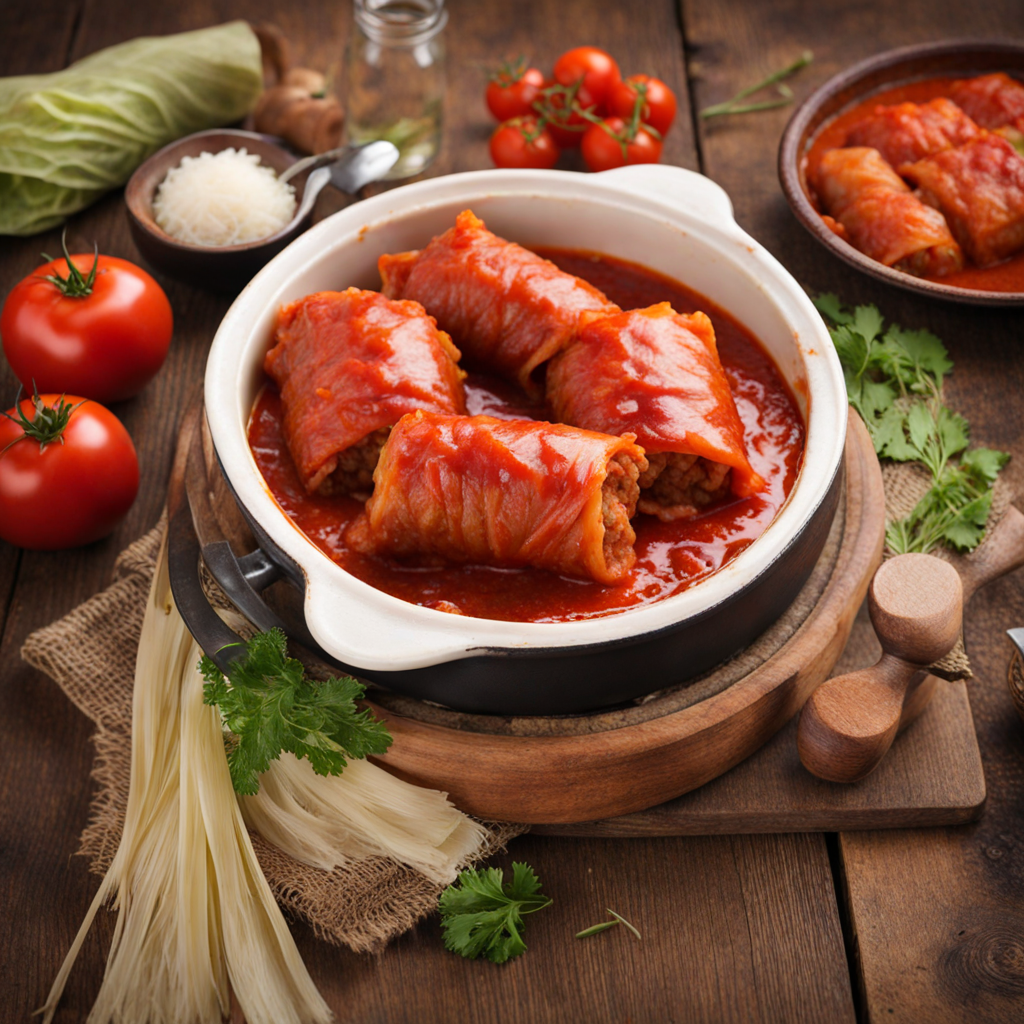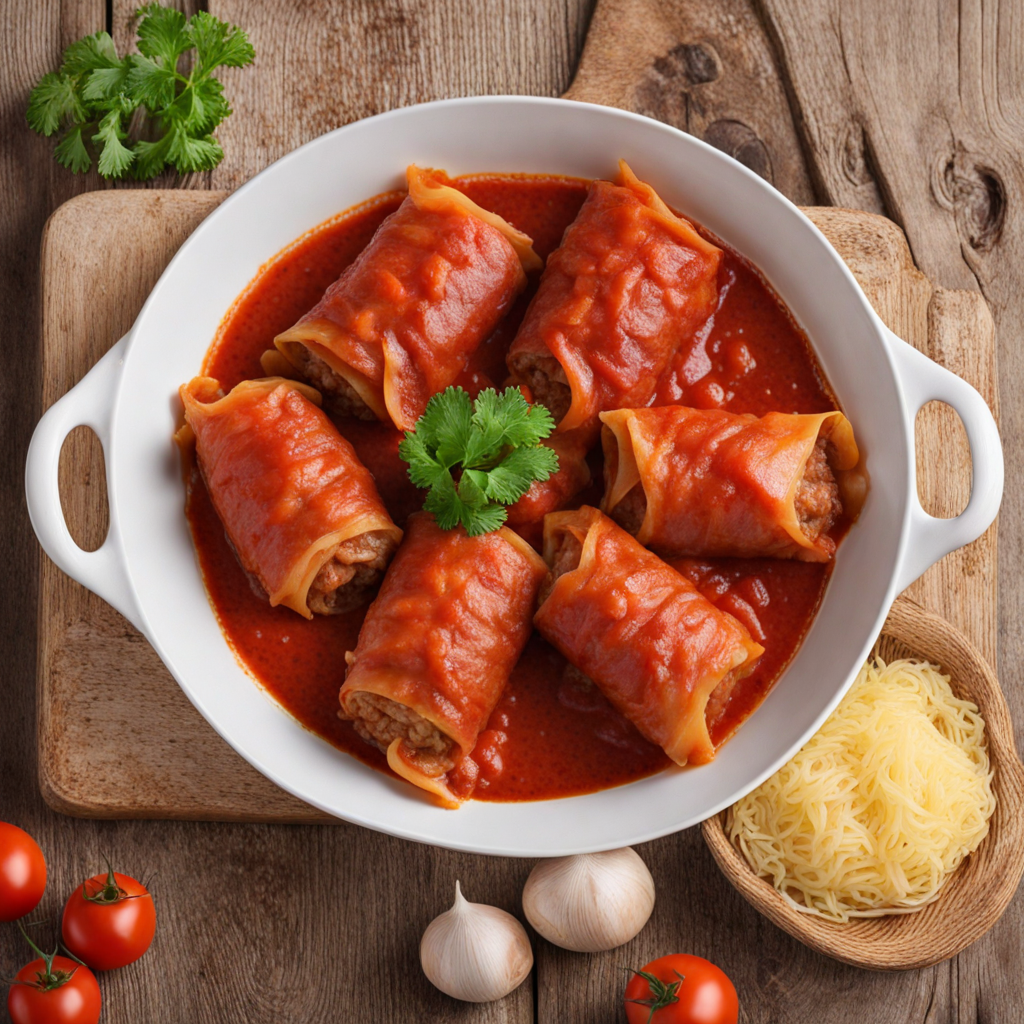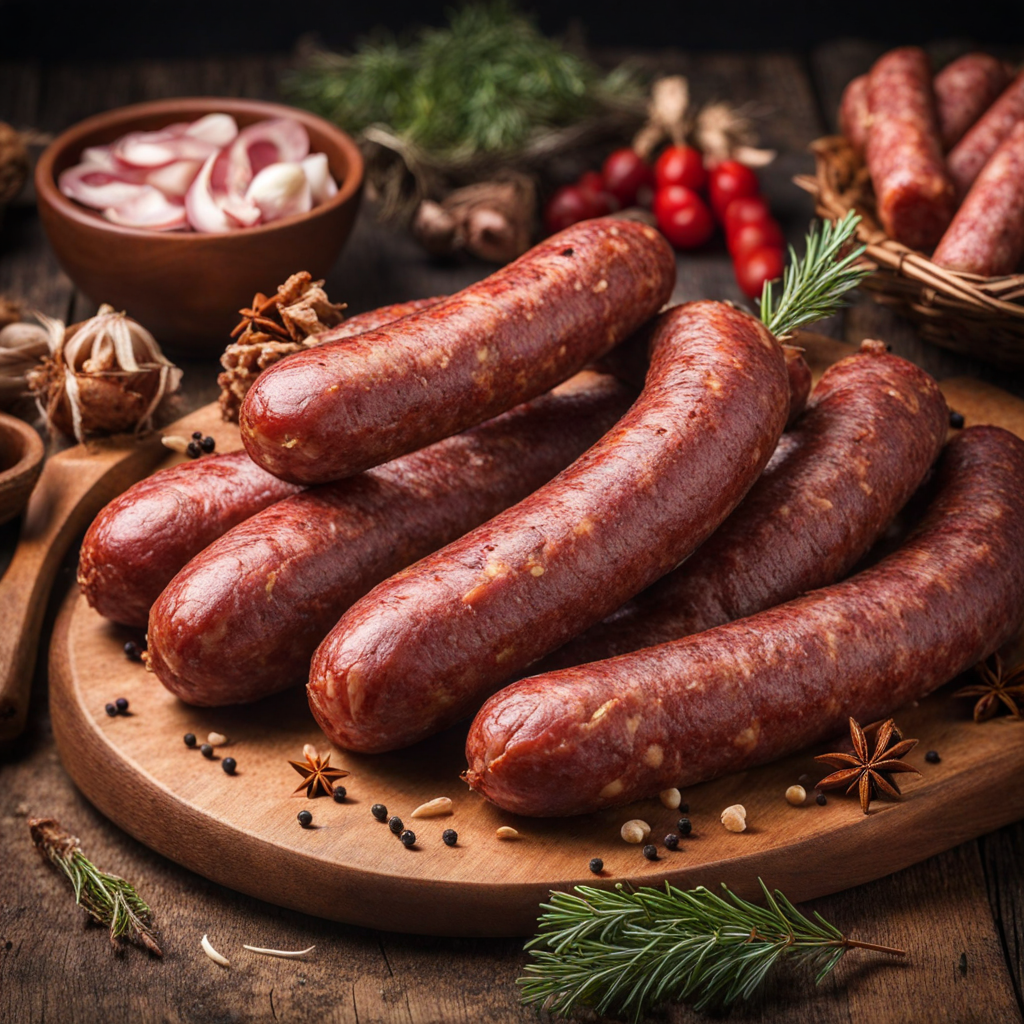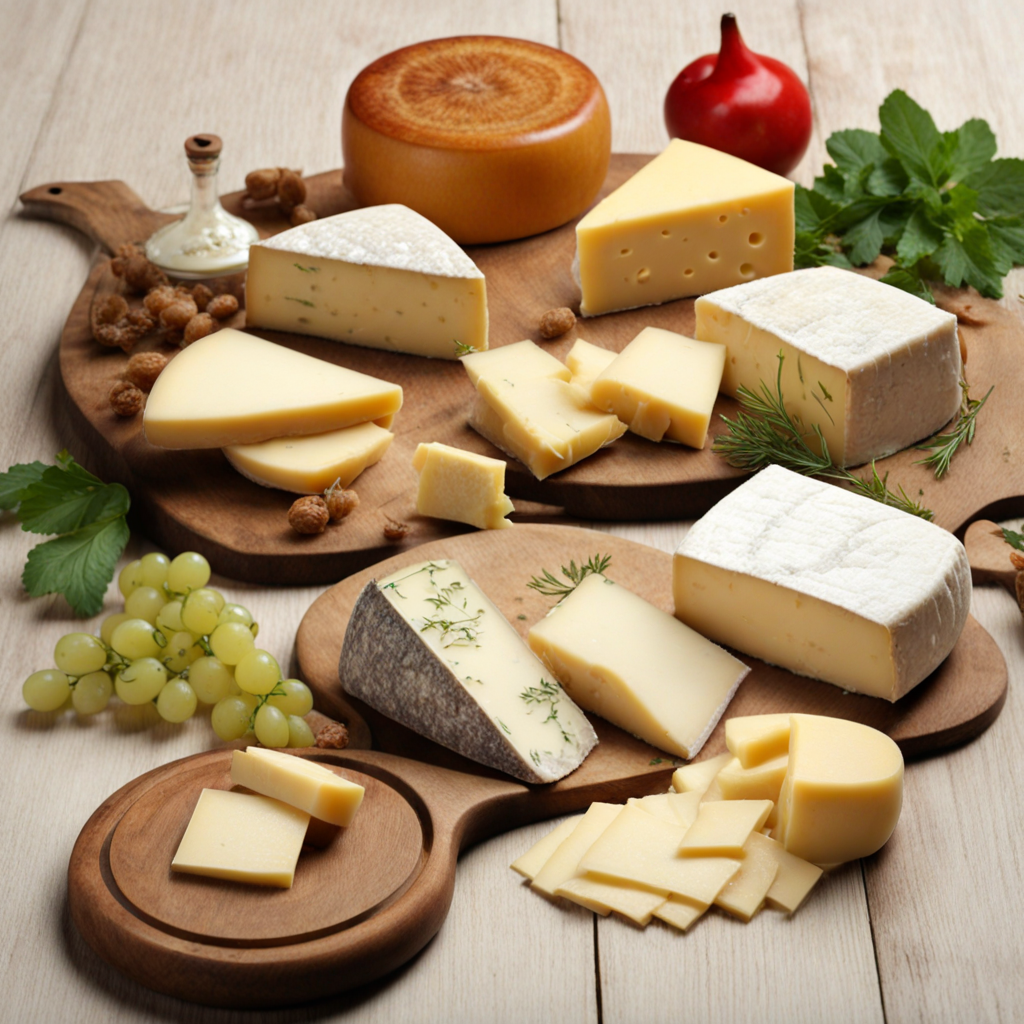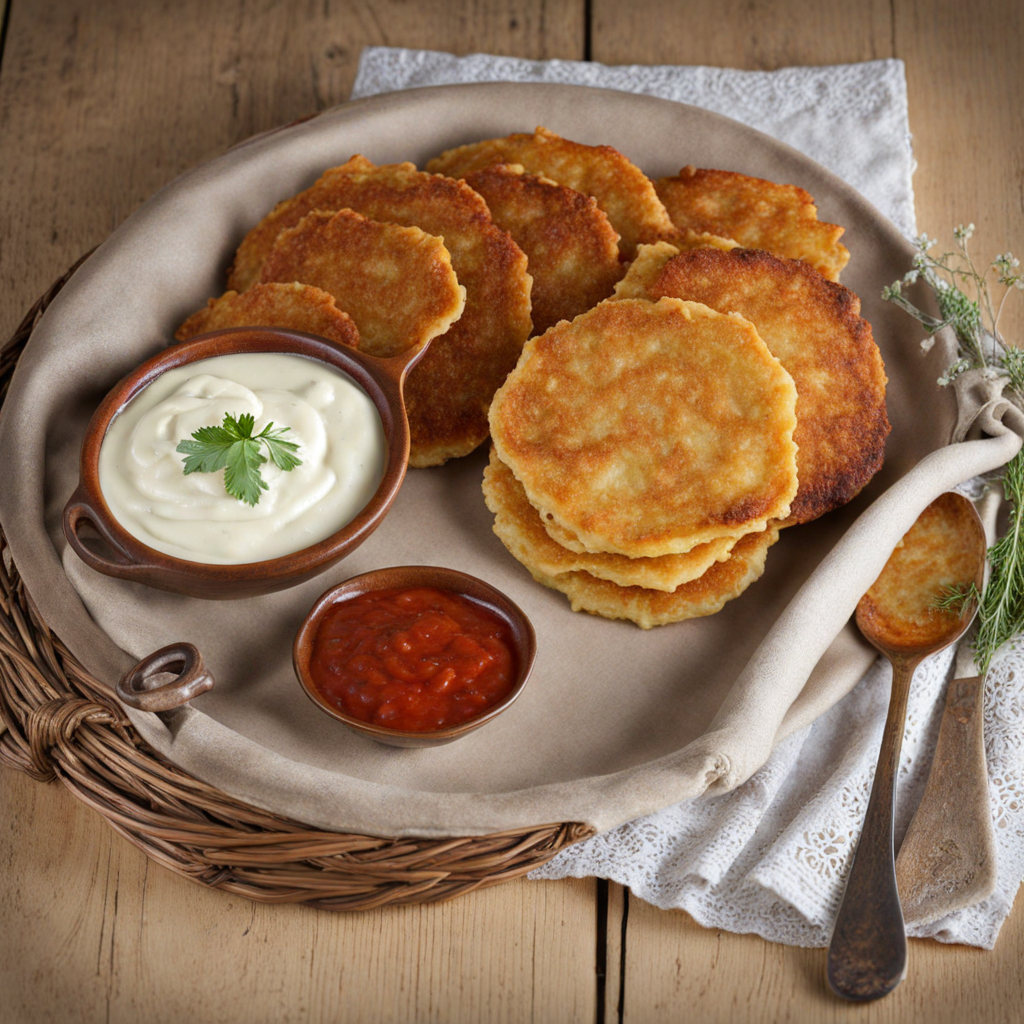Balandėliai
Balandėliai, often referred to as Lithuanian stuffed cabbage rolls, is a traditional dish that showcases the heartiness of Eastern European cuisine. This comforting meal features tender cabbage leaves, which are delicately blanched to achieve the perfect pliability for wrapping. The filling is typically a mixture of minced meat—often pork or beef, combined with rice and an array of aromatic spices. The balance of flavors is enhanced with onions and occasionally herbs, creating a savory profile that is both satisfying and rich in taste. Once assembled, the rolls are gently simmered in a tangy tomato sauce or broth, allowing the flavors to meld beautifully as they cook. This slow cooking process not only infuses the cabbage with a delectable taste but also creates a luscious sauce that complements the rolls perfectly. The addition of sour cream as a topping before serving provides a creamy contrast, enhancing the overall flavor experience. Each bite reveals a tender cabbage exterior enveloping a moist, flavorful filling, making Balandėliai a true comfort food. Balandėliai is often enjoyed as a family meal, especially during festive occasions and gatherings, reflecting the communal spirit of Lithuanian culture. The dish is not only delicious but also embodies the warmth of home-cooked meals, inviting diners to savor each mouthful. Its simplicity and heartiness make it a beloved staple, while its rich flavors and textures offer a delightful culinary adventure for anyone looking to explore traditional Lithuanian fare.
How It Became This Dish
The History of Balandėliai: Lithuania’s Stuffed Cabbage Delight Origins: A Culinary Mosaic Balandėliai, the beloved Lithuanian dish of stuffed cabbage rolls, has a history that reflects the rich tapestry of Lithuania's cultural and culinary influences. The term "balandėliai" translates to "little doves," which poetically evokes the image of the cabbage leaves gently cradling their savory fillings. This dish, while deeply rooted in Lithuanian tradition, exhibits a melding of flavors and techniques that have been shaped by centuries of historical exchange. The origins of balandėliai can be traced back to the peasant kitchens of Eastern Europe, where resourcefulness was paramount. Cabbage, a hardy vegetable that thrived in the region's cold climate, became a staple. The practice of stuffing vegetables is not unique to Lithuania; variations can be found throughout the Slavic nations and beyond, with each culture adding its own twist. The use of cabbage leaves to envelop a mixture of meat and grains is a practical way to stretch limited resources, showcasing the ingenuity of rural communities. Historically, Lithuania has been a crossroads of trade and migration, influenced by neighboring countries such as Poland, Russia, and Germany. The culinary practices of these nations have intermingled, leading to the evolution of balandėliai as a dish that embodies both local and pan-European elements. The inclusion of rice, meat (often pork or beef), and spices reflects a blend of influences, where local ingredients were harmonized with traditions brought by traders and invaders. Cultural Significance: A Symbol of Home and Heritage Balandėliai is more than just a meal; it is a symbol of Lithuanian identity and cultural heritage. Traditionally, the dish is prepared for family gatherings, holidays, and celebrations. Its preparation is often a communal activity, with family members coming together to make the rolls, reflecting the warmth of Lithuanian hospitality. The act of cooking balandėliai is steeped in ritual, marking important life events, from weddings to Christmas feasts. In Lithuanian culture, food serves as a means of storytelling. Balandėliai embodies the narratives of resilience and unity, representing the agricultural lifestyle that has defined the country for centuries. During times of hardship, such as the Soviet occupation, traditional dishes like balandėliai became a source of comfort and familiarity, allowing people to maintain a connection to their heritage and identity. Moreover, balandėliai holds a special place in Lithuanian literature and folklore, often appearing in tales that celebrate rural life. The dish is associated with the concept of nurturing, as it provides sustenance not only for the body but also for the soul. It embodies the values of family, tradition, and the cyclical nature of life, where the act of cooking and sharing food fosters bonds among generations. Development Over Time: Adapting to Change As Lithuania evolved through waves of political change and modernization, so too did the preparation and presentation of balandėliai. In the early 20th century, when Lithuania regained independence after the First World War, there was a renewed interest in national identity and traditional foods. Balandėliai became a dish that resonated with the spirit of independence, serving as a culinary emblem of national pride. The post-World War II era brought significant changes to the culinary landscape due to Soviet influence. During this time, many traditional recipes were adapted to incorporate more readily available ingredients, as well as to align with state-sponsored food programs. While some families continued to make balandėliai using their cherished recipes, others had to simplify the dish or substitute ingredients based on availability. This adaptability is a testament to the resilience of Lithuanian cuisine, which has managed to retain its essence while evolving to meet the circumstances of the times. In contemporary Lithuania, balandėliai has experienced a renaissance as chefs and home cooks alike revisit traditional recipes with a modern twist. The dish has found its place in gourmet restaurants, where chefs experiment with different fillings, such as mushrooms, quinoa, or various meats, and incorporate local seasonal vegetables. This innovation pays homage to the past while also catering to the palates of a new generation. Moreover, the diaspora of Lithuanians around the world has contributed to the dish's evolution. In countries like the United States, Canada, and the UK, Lithuanian communities have preserved their culinary traditions while also adapting to their new environments. Balandėliai has become a dish that brings together not just Lithuanians but also those curious about Eastern European cuisine, fostering a sense of community and cultural exchange. Conclusion: A Timeless Tradition Today, balandėliai stands as a testament to Lithuania's culinary heritage, embodying the spirit of the land and its people. The dish is more than just a meal; it is a connection to history, culture, and family. As Lithuanians continue to celebrate their traditions while embracing modernity, balandėliai remains a cherished part of their culinary landscape. In a world that often seems increasingly homogenized, the enduring popularity of balandėliai serves as a reminder of the importance of preserving cultural identities through food. This simple yet profound dish encapsulates the essence of Lithuania—a country defined by its resilience, community, and rich culinary history. Whether enjoyed at a festive gathering or a quiet family dinner, balandėliai is a delicious link to the past, a celebration of the present, and a promise of continuity for future generations.
You may like
Discover local flavors from Lithuania


